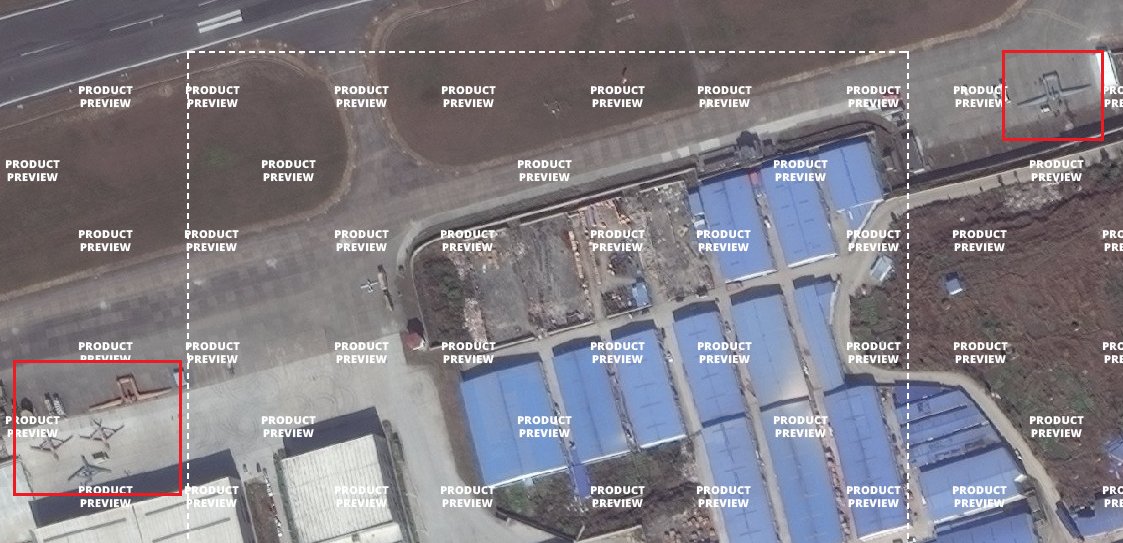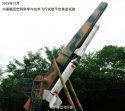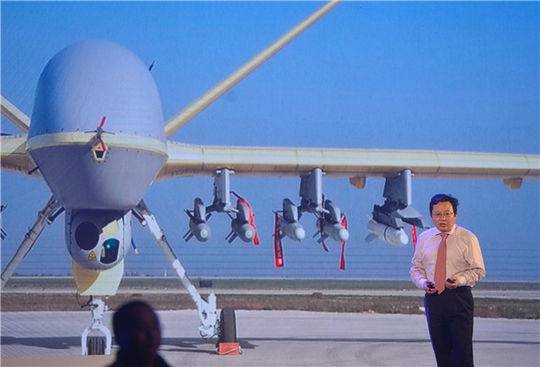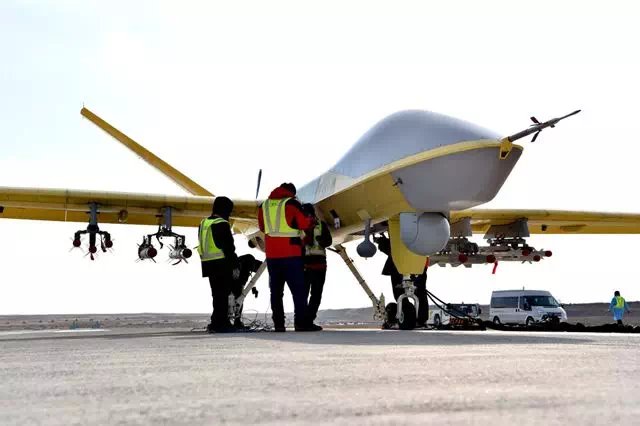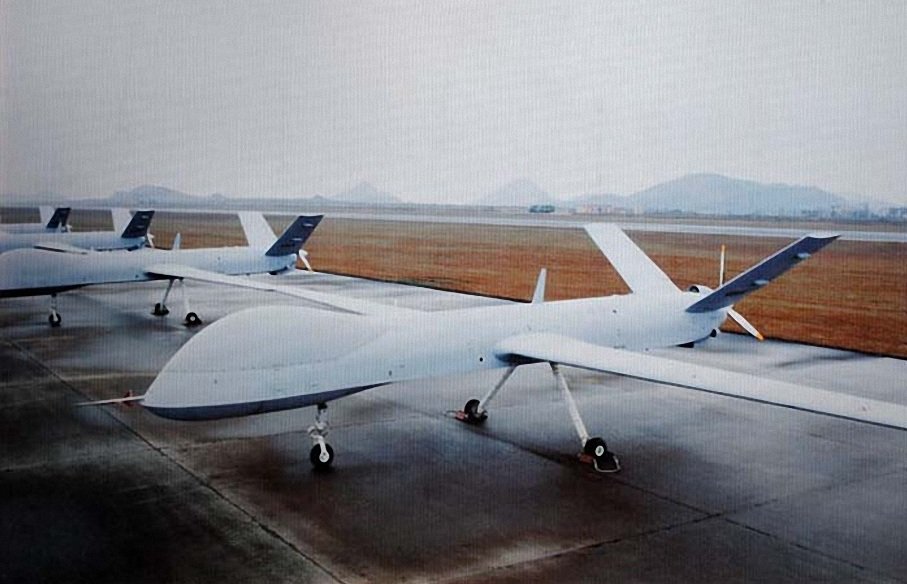Hendrik_2000
Lieutenant General
PLAN is the main operator of this UAV
The Drone Index: Harbin BZK-005
MAY 16, 2017
It’s isn’t hyperbole to acknowledge China’s stature as Asia’s reigning drone power. For perspective, consider how its neighbors, including India, Japan, and Russia, are hard-pressed at deploying UAVs on the same scale and level of sophistication.
The mysterious BZK-005 is a perfect example of Beijing’s commitment to governing its airspace. It’s one of the largest unmanned reconnaissance aircraft flown outside the US even if its true capabilities are still guesstimates at best. The BZK-005 is recognizable for its large air frame and swept wings. A prominent nose blister houses its navigational software and avionics. Underneath is a familiar optronic “eyeball” gimbal. The unspecified propeller engine is located between the tail sections.
The BZK-005 follows a conventional twin-boom layout and is identified as a MALE UAV whose characteristics are–for lack of a better word–extraordinary. It’s worth contemplating whether its origins can be traced to cutting-edge research or, like , the shadowy influence of an understated technology partner.
Examining the small body of literature on the BZK-005 reveals it’s a prized asset for the PLAN, who operate it from bases in mainland China. The BZK-005 is reported to have a service ceiling of 26,000 feet with an operational endurance lasting 40 hours.
The BZK-005’s maximum range is alleged to be at 2,400 kilometers and its flight speed reaches 170 km/h. Taking stock of these numbers inspires comparisons to the BZK-005’s closest peers. While some claim it’s a worthy analog to the MQ-1 Predator, it shares a greater kinship with and its European counterpart, .
It’s startling how China’s state-owned aerospace sector, with help from STEM institutions, succeeded at a long-range UAV where other countries didn’t. While the prototype almost became the most advanced drone in the world, it was never rolled out for any customers. India, on the other hand, that went on to achieve nothing.
Details on the BZK-005’s origins are scarce but it’s believed the Harbin Aircraft Industry Group didn’t begin production until the mid-2000s. It’s possible the BZK-005 entered service with the PLAN by the 2010s because it was late 2013 when the BZK-005 came to the world’s attention after Japanese fighter jets intercepted one in the East China Sea.
How many BZK-005’s are in use is a question mark at this point. But modified to carry 1.5 tons of ordnance is being readied for serial production in 2018. The model, called the TYW-1, is a project by the Beijing University of Aeronautics and Astronautics (a.k.a. Beihang University) who were the original developers of the BZK-005 together with Harbin Aircraft.
The BZK-005’s current role is confined to intelligence gathering. This explains its deployment in China’s maritime frontier and other remote locations, such as Xinjiang, where surveillance is a premium. As an upcoming export product, the BZK-005/TYW-1 will be attractive to countries looking for security tools against terrorists and other internal threats.
Existing , like Pakistan, Saudi Arabia, and Turkmenistan, might be tempted by the prospect of owning a missile-carrying naval drone.
The Drone Index: Harbin BZK-005
MAY 16, 2017
It’s isn’t hyperbole to acknowledge China’s stature as Asia’s reigning drone power. For perspective, consider how its neighbors, including India, Japan, and Russia, are hard-pressed at deploying UAVs on the same scale and level of sophistication.
The mysterious BZK-005 is a perfect example of Beijing’s commitment to governing its airspace. It’s one of the largest unmanned reconnaissance aircraft flown outside the US even if its true capabilities are still guesstimates at best. The BZK-005 is recognizable for its large air frame and swept wings. A prominent nose blister houses its navigational software and avionics. Underneath is a familiar optronic “eyeball” gimbal. The unspecified propeller engine is located between the tail sections.
The BZK-005 follows a conventional twin-boom layout and is identified as a MALE UAV whose characteristics are–for lack of a better word–extraordinary. It’s worth contemplating whether its origins can be traced to cutting-edge research or, like , the shadowy influence of an understated technology partner.
Examining the small body of literature on the BZK-005 reveals it’s a prized asset for the PLAN, who operate it from bases in mainland China. The BZK-005 is reported to have a service ceiling of 26,000 feet with an operational endurance lasting 40 hours.
The BZK-005’s maximum range is alleged to be at 2,400 kilometers and its flight speed reaches 170 km/h. Taking stock of these numbers inspires comparisons to the BZK-005’s closest peers. While some claim it’s a worthy analog to the MQ-1 Predator, it shares a greater kinship with and its European counterpart, .
It’s startling how China’s state-owned aerospace sector, with help from STEM institutions, succeeded at a long-range UAV where other countries didn’t. While the prototype almost became the most advanced drone in the world, it was never rolled out for any customers. India, on the other hand, that went on to achieve nothing.
Details on the BZK-005’s origins are scarce but it’s believed the Harbin Aircraft Industry Group didn’t begin production until the mid-2000s. It’s possible the BZK-005 entered service with the PLAN by the 2010s because it was late 2013 when the BZK-005 came to the world’s attention after Japanese fighter jets intercepted one in the East China Sea.
How many BZK-005’s are in use is a question mark at this point. But modified to carry 1.5 tons of ordnance is being readied for serial production in 2018. The model, called the TYW-1, is a project by the Beijing University of Aeronautics and Astronautics (a.k.a. Beihang University) who were the original developers of the BZK-005 together with Harbin Aircraft.
The BZK-005’s current role is confined to intelligence gathering. This explains its deployment in China’s maritime frontier and other remote locations, such as Xinjiang, where surveillance is a premium. As an upcoming export product, the BZK-005/TYW-1 will be attractive to countries looking for security tools against terrorists and other internal threats.
Existing , like Pakistan, Saudi Arabia, and Turkmenistan, might be tempted by the prospect of owning a missile-carrying naval drone.
Last edited:





